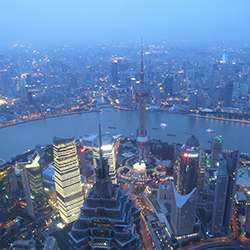Investment Strategies
It's Not All About Exports Any More - China's Economy Has Shifted Radically - Matthews Asia

The contribution of exports to the Chinese economy is important but should not be exaggerated, an investment house says, implying that the pain of any adjustment to a more domestically-driven economy might not be as nasty as some think.
Go to any investment conference or peruse the news pages, and a
stock line is how China must reorient itself from being an
export-driven economy to a domestically-focused one or else
suffer a terrible fate. The talk is about “rebalancing” and
“adjustment”.
The process is seen, needless to say, as painful. A few months
ago, I was told by Goldman Sachs’s investment analysts that no
economy in history has been able to make this adjustment without
pain (ie, a banking crisis). By the way, Goldman Sachs has a 90
per cent-plus probability that such a financial crisis in China
is likely in the next few years. In markets, timing these things
is always hard to do.
One of those investment houses that is not quite so concerned
about all this – but not complacent - in how things will play out
in the world’s second-largest economy is Matthews Asia, a San
Francisco-headquartered firm that oversees around $26 billion of
assets under management, and which specialises in Asia, as the
name implies. Andy Rothman, investment strategist at the firm,
notes that exports play only a “supporting role” in China’s
economy today, now driven mainly by domestic consumption and
investment.
Some hard numbers: Net exports accounted for only 2.4 per cent of
China's GDP last year, with 90 per cent of industrial output
consumed domestically. Despite rapid wage growth and currency
appreciation, China remains competitive, with the Chinese share
of total US goods imports rising to 19 per cent last year from 13
per cent in 2004. And he goes on to say that one needs also to be
careful about the “made in China” tag, as it can be misleading.
Often as not, the goods are made elsewhere, but assembled in the
country: “Although the share of China’s exports that are just
processed or assembled there has been declining, it still
accounts for 38 per cent of the total, down from 50 per cent in
2001.”
In a set of eye-catching charts, Rothman also explains how far
the landscape in China has changed since the 2008 crisis. “During
the decade prior to the Global Financial Crisis, China averaged
about 10 per cent annual GDP growth, with net exports
contributing only about 1 percentage point of that growth. Today,
China is even less dependent on exports. Last year, net exports
actually posed a -4.4 per cent drag on GDP growth, and in the
first quarter of this year, net exports left a -19 per cent
contribution to growth,” he writes.
And he rams the point home by examining the assembly of parts for
iPads and other gadgets loved by people the world over: “Our
message is not that exports do not matter. They do, especially to
the tens of millions of workers assembling iPads and other
gadgets. But it is important to understand that China is a
continental, domestic investment and domestic consumption-driven
economy, where exports play only a supporting role. The
overwhelming majority of goods made in China stay in China.”
Of course, it is one thing to crunch such numbers, another to
know how the world will be affected by any continued shift by the
Asian giant towards developing a home-grown middle class with an
appetite for the modern conveniences and services. But the data
does suggest that a good deal of this has happened already. China
is not out of the woods yet, given the opacity of its financial
system and concerns about malinvestment as a result of state
control. There could still be painful adjustments ahead. But if
the Matthews Asia figures are a guide, the scale of that change
may not be as daunting as is sometimes suggested.
